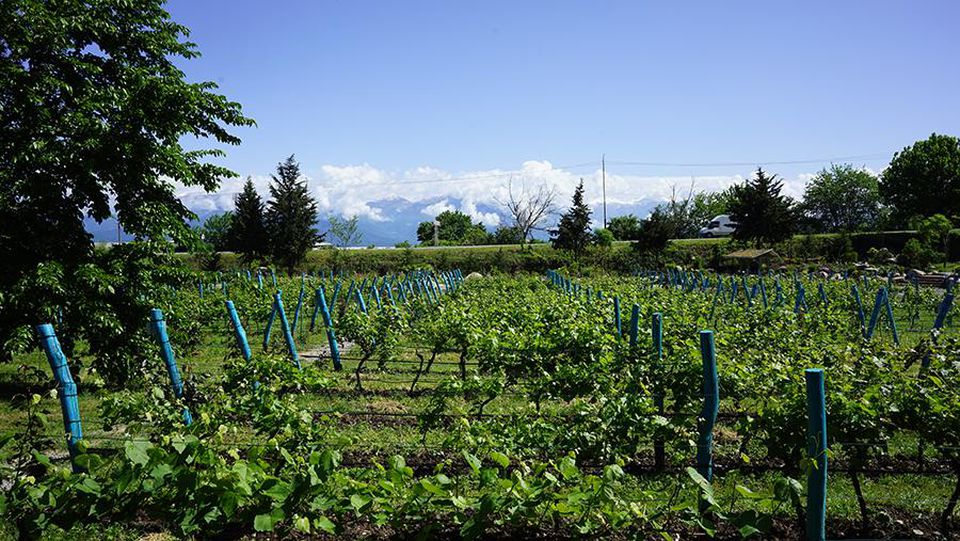
Why Georgian Wines Are Among The Most Unique On The Planet, – this is a title of the article published by American edition of “Forbes”.
“When archaeologists last year found traces of winemaking on 8,000-year-old pottery shards in Georgia, the tiny former Soviet republic claimed the crown as the world’s oldest wine producer”, – the author of the article Lana Bortolot writes.
Article notes, that Georgia’s hallmark is white wines that stay in contact with their skins, stalks and pips for months and further ferment in huge clay amphorae (qvevri) buried in the ground and It’s a trend that’s caught on elsewhere in the world, but its deep roots lie in Georgian culture.
The article included the assessment of Noel Brockett, director of sales at the Georgian Wine House. “There’s something very particular about how Georgians love wine,” he said. “It’s a little eccentric but then you start looking into it and once you do, you’re truly amazed—it’s such an integral part of the culture and everyday life.” – says Noel Brockett, director of sales at the Georgian Wine House in Washington, D.C., who attends industry events dressed in a chokha.
According to the article, traditional winemaking in Georgia has always been a home endeavor, infused with history, religion and mythology, and references dating to the fourth century. An oft-told legend relates how soldiers wove a piece of grapevine into the chain mail protecting their chests, so when they died in battle, a vine sprouted not just from their bodies, but their hearts.
“Even where we think a culture like France or Italy is so wine-centric, Georgians just take it to a whole different level—much deeper than what we’re exposed,” said Taylor Parsons, an Los-Angeles sommelier, who has visited Georgian wine country three times.
The article notes that despite boasting 8,000 vintages, Georgian wines have come onto the world wine map only recently—thanks in part to the amber-wine trend, growing interest in natural wines, and improvements in the vineyard and winery.
“Georgia needed to change at the same time that these other things were trending,” says Master of Wine Lisa Granik, who serves as market adviser to Georgia’s National Wine Agency.
But geopolitical reasons were at play, too. Wedged in between the Caspian and Black seas, winemaking in the small republic suffered under Soviet rule until 2003. Historic plantings were pulled up for the production of cheap factory wines. Civil war and then a Russian embargo on all Georgian wine from 2006 to 2013 further stalled a migration to quality. By the time Georgia’s economy was functioning, “the wine quality was swill—at least what was commercially produced,” says Granik.
“Georgia’s wine heritage was revived when people such as John Wurdeman saw its unique place in the world. The American was already living in the country as a ex-pat painter when he was introduced to the local wine by Gela Patalishvili, an eighth-generation winemaker in Kakheti—Georgia’s ground zero for winemaking (nearly three-quarters of the country’s production). Together they founded the Pheasant’s Tears winery in 2007, jumpstarting both the revival and preservation of Georgian wine culture”, – the article reads.
“Bolstered by well-attended tasting events such as the international RAW Wine Fair, and the Zero Compromise and New Wine festivals held in Tbilisi, Georgian winemakers now range from the traditional to a new wave of ex-pats such as Vincent Jullien and Guillaume Gouerou, two Frenchmen who created Lapati, a bare-bones farm in Sagarejo, Kakheti. Here they produce about 12,000 bottles (sourced from an old Soviet factory, as many things in Georgia are adaptively reused) for markets like Japan and Denmark and hip wine bars in the United States. On trend is their “pet-nat” made from the Chinuri grape grown on high-elevation chalky soils, which posed the question of terroir—a concept with which Georgian winemakers are still grappling”, – article published by Forbes reads.
“Georgia is still going through a process where people are trying to improve the vineyards that were in a terrible state, and there’s still a lot of producers are not fully in control of their quality,” he said. “You can tell when you encounter a producer who really understands the viticulture part of the equation and it’s just extraordinary how different that can be.” – Simon J. Woolf, Wine Expert says.
At the end of the article, the author recommends the reader to try five types of Georgian wine, including – Kisi, Mtsvane, Rkatsiteli, Saperavi and Tsinandali.





